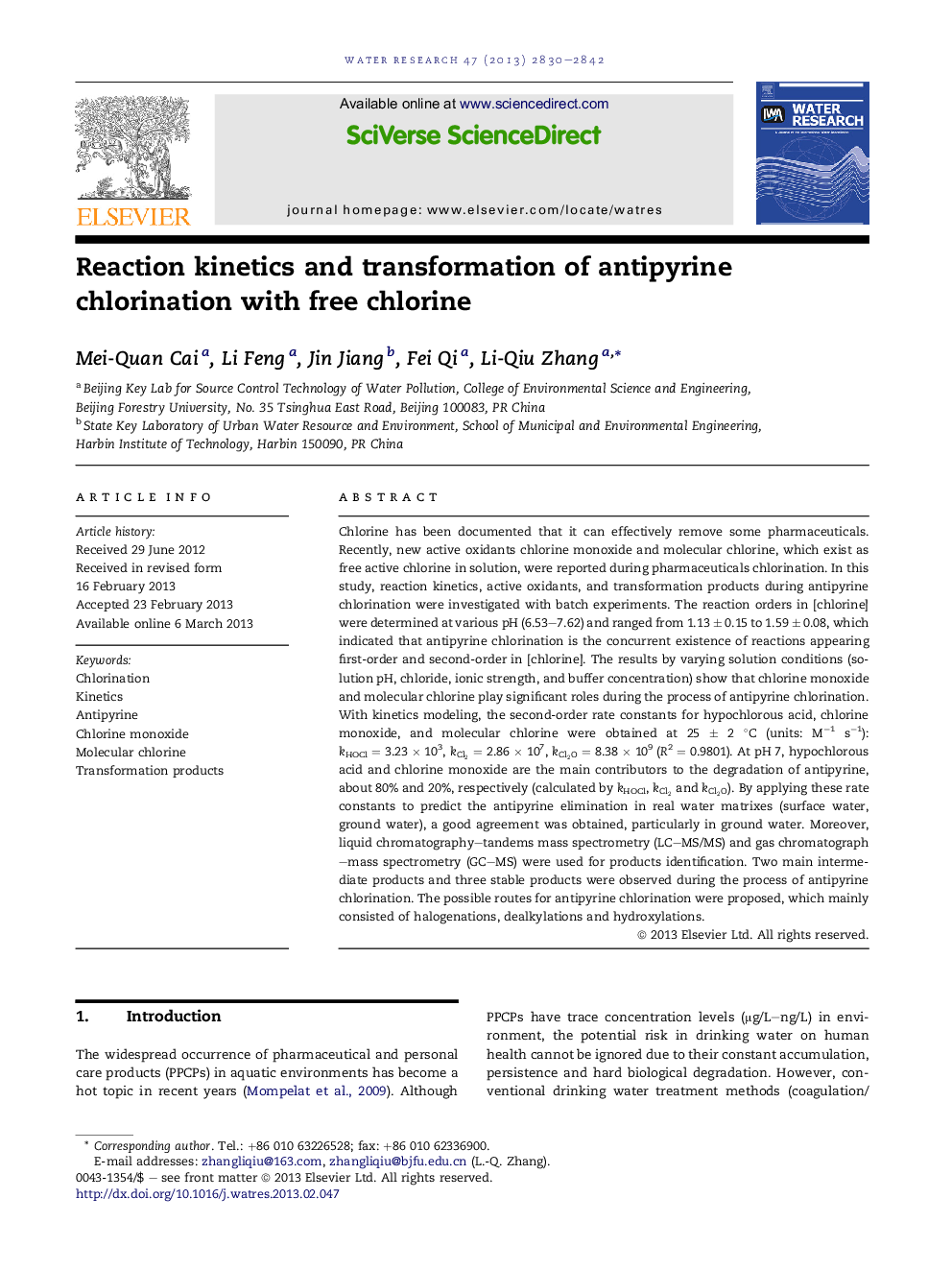| کد مقاله | کد نشریه | سال انتشار | مقاله انگلیسی | نسخه تمام متن |
|---|---|---|---|---|
| 4482250 | 1316852 | 2013 | 13 صفحه PDF | دانلود رایگان |

Chlorine has been documented that it can effectively remove some pharmaceuticals. Recently, new active oxidants chlorine monoxide and molecular chlorine, which exist as free active chlorine in solution, were reported during pharmaceuticals chlorination. In this study, reaction kinetics, active oxidants, and transformation products during antipyrine chlorination were investigated with batch experiments. The reaction orders in [chlorine] were determined at various pH (6.53–7.62) and ranged from 1.13 ± 0.15 to 1.59 ± 0.08, which indicated that antipyrine chlorination is the concurrent existence of reactions appearing first-order and second-order in [chlorine]. The results by varying solution conditions (solution pH, chloride, ionic strength, and buffer concentration) show that chlorine monoxide and molecular chlorine play significant roles during the process of antipyrine chlorination. With kinetics modeling, the second-order rate constants for hypochlorous acid, chlorine monoxide, and molecular chlorine were obtained at 25 ± 2 °C (units: M−1 s−1): kHOCl = 3.23 × 103, kCl2kCl2 = 2.86 × 107, kCl2OkCl2O = 8.38 × 109 (R2 = 0.9801). At pH 7, hypochlorous acid and chlorine monoxide are the main contributors to the degradation of antipyrine, about 80% and 20%, respectively (calculated by kHOCl, kCl2kCl2 and kCl2OkCl2O). By applying these rate constants to predict the antipyrine elimination in real water matrixes (surface water, ground water), a good agreement was obtained, particularly in ground water. Moreover, liquid chromatography–tandems mass spectrometry (LC–MS/MS) and gas chromatograph–mass spectrometry (GC–MS) were used for products identification. Two main intermediate products and three stable products were observed during the process of antipyrine chlorination. The possible routes for antipyrine chlorination were proposed, which mainly consisted of halogenations, dealkylations and hydroxylations.
Figure optionsDownload high-quality image (108 K)Download as PowerPoint slideHighlights
► Chlorine showed high reactivity with antipyrine (ANT).
► Cl2 and Cl2O were proved to exist in ANT chlorination.
► The second-order rate constants of active oxidants were obtained with a trend kHOCl<
► The possible degradation routes were halogenations, dealkylations and hydroxylations.
Journal: Water Research - Volume 47, Issue 8, 15 May 2013, Pages 2830–2842